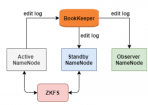
作者:JS强迫症患者
https://juejin.im/post/5ed3cd366fb9a047f129c39a
本文初衷是想列举一些比较“多余”的API以及对应原生JS写法;后面发现API过多,精力有限,慢慢的变成记录那些有助于提高开发效率的API,希望对您有所帮助。对于那些,根据名字或者描述便能知道其实际用途的API,笔者未做Demo演示。各位看官可以查看对应官方文档便能快速应用于实际开发,Lodash中文API 上有详细介绍。
一、收获
lodash那些功能强大的API
lodash那些“多余”的API及原生JS对应写法
二、 Lodash
Lodash 是一个一致性、模块化、高性能的 JavaScript 实用工具库。采用函数类API,多数API都不修改传入的参数;
Lodash功能强大,涵盖了前端开发中能遇到的大部分逻辑功能点,使用Lodash能大大提高我们的开发效率。但这也有一个弊端:便利往往会使我们变"懒"。仁者见仁智者见智,Lodash带来便利同时,我们应该时刻记住:JavaScript才是我们的根本;
Lodash中“多余”的API并不多余,API内部处理了很多开发者常常忽略的异常情况,使代码更加安全;
对于大部分Lodash API对比手写JS对应逻辑功能点,并不会提高性能;
Lodash,gitHub star数为45K。同时是一个学习教材,通过阅读源码能帮助我们夯实JavaScript基础。函数式API让每个逻辑功能点代码量不大,比较容易理解。基础差的同学可以通过阅读源码,手写源码的方式来夯实JavaScript,比如手写:柯里化,防抖,节流,bind,字符串template等。
三、数组 Array
“多余”指数:☆☆
compact(过滤假值)
lodash.compact([0, 1, false, 2, '', 3])
[0, 1, false, 2, '', 3].filter(_ => _)
// [1, 2, 3]
concat(数组拼接)
lodash.concat([1], [2, 3, 4], [5, 6])
[1, ...[2, 3, 4], ...[5, 6]]
// [1, 2, 3, 4, 5, 6]
fill(填充)
lodash.fill([1,2,3],'a')
[1,2,3].fill('a'))
// ['a', 'a', 'a']
lodash.fill(Array(3),'b')
Array(3).fill('b')
// ['b', 'b', 'b']
head(获取第一个元素)
const first1 = lodash.head([1, 2, 3])
const [first2] = [1, 2, 3]
// 1
flatten(降1个维度)
lodash.flatten([1, [2, [3, [4]], 5]]))
[1, [2, [3, [4]], 5]].flat(1))
// [1, 2, [3, [4]], 5]
flattenDeep | flattenDepth(降为一维数组)
lodash.flattenDeep([1, [2, [3, [4]], 5]])
lodash.flattenDepth([1, [2, [3, [4]], 5]], 3)
[1, [2, [3, [4]], 5]].flat(Infinity)
// [1, 2, 3, 4, 5]
fromPairs(entries类型数组转换为对象)
lodash.fromPairs([['fred', 30], ['barney', 40]])
Object.fromEntries([['fred', 30], ['barney', 40]])
// {fred: 30, barney: 40}
pull(移除指定元素)
lodash.pull([1, 2, 3, 1, 2, 3], 2, 3)
[1, 2, 3, 1, 2, 3].filter(item => ![2, 3].includes(item))
// [1, 1]
Array自带的reverse (数组翻转)、slice(切割)、join(字符串拼接)、indexOf | lastIndexOf(匹配索引)等
“多余”指数:☆
difference
lodash.difference([3, 2, 1], [4, 2])
[3, 2, 1].filter(item => ![4, 2].includes(item))
tail(返回不包含第一个元素的数组)
var other = lodash.tail([1, 2, 3])
var [, ...other] = [1, 2, 3] // 可扩展不包含前第n个元素
take (0 - n的元素),如果用于删除数组元素有点"多余"
let arr1 = [1, 2, 3, 4, 5]
arr1 = lodash.take(arr1, 2) // 做赋值,删除元素
const arr2 = [1, 2, 3, 4, 5]
arr2.length = 2 // 修改长度,直接删除后面元素,可用于清空数组
// [1, 2]
眼前一亮的API
pullAt (根据下标选择元素,分到两个数组)
takeRight ( 返回从结尾元素开始n个元素的数组切片 )
// 倒数解构
const [beforeLast, last] = lodash.takeRight([1, 2, 3, 4], 2)
console.log(beforeLast, last) // 3 4
zipObject
lodash.zipObject(['a', 'b'], [1, 2]);
// => { 'a': 1, 'b': 2 }
zipObjectDeep
lodash.zipObjectDeep(['a.b[0].c', 'a.b[1].d'], [1, 2]);
// => { 'a': { 'b': [{ 'c': 1 }, { 'd': 2 }] } }
xor( 创建一个给定数组唯一值的数组 )
眼前二亮的API
remove(元素筛选,分到两个数组)
sortedUniq (去重,排序)
takeRightWhile ( 从array数组的最后一个元素开始提取元素,直到predicate返回假值 )
uniqBy (去重,排序)
四、集合 Collection
Collection很多API都能让人眼前一亮,在实际开发中都能得到应用。
forEach(遍历数组或对象) | forEachRight(反序遍历数组或对象)
// 遍历数组有点多余
lodash([1, 2]).forEach((val) => {
console.log(val)
})
// 遍历对象就
lodash({ a: 1, b: 2 }).forEach((val, key) => {
console.log(val, key)
})
// 原生js写法 **** 注意数组解构顺序
Object.entries({ a: 1, b: 2 }).forEach(([key, val]) => {
console.log(val, key)
})
every(每个元素都符合条件)| some(某个元素符合条件)| filter(过滤)| find(查找第一个)| findLast(查找最后一个)| includes(抱哈某个元素)。亮点:可以传入一个对象进行匹配
console.log(lodash([true, 1, null, 'yes']).every(Boolean)) // false
// 等效于
console.log([true, 1, null, 'yes'].every(Boolean)) // false
const users = [
{ user: 'barney', age: 40, active: false },
{ user: 'fred', age: 40, active: false },
]
// *******眼前一亮的用法********
console.log(lodash(users).every({ active: false, age: 40 })) // true
// 等效于
console.log(users.every((item) => item.active === false && item.age === 40)) // true
console.log(lodash.find(users, { user: 'fred' }) === users[1]) // true
console.log(lodash.filter(users, { user: 'fred' })) // object for ['fred']
console.log(lodash.some(users, { user: 'fred' })) // true
groupBy(分组)
const users = [
{ id: 'a', age: 40, height: 1 },
{ id: 'b', age: 39, height: 2 },
{ id: 'c', age: 38, height: 2 },
{ id: 'd', age: 40, height: 2 },
]
console.log(lodash.groupBy(users, 'age'))
// 按age分组:{38:obj for ['a'], 39:obj for ['b'], 40:obj for ['c', 'd']}
console.log(lodash.groupBy(users, ({ age, height }) => age + height))
// 按age+height结果分组:{40:obj for ['c'], 41:obj for ['a', 'b'], 42:obj for ['d']}
invokeMap (分解item:循环调用方法,方法返回值替换集合item)
keyBy ( 生成对象:组成聚合的对象 ;key值来源于回调,回调参数为对应集合item;value为item)
orderBy | sortBy(排序:可指定多个排序字段,有优先级;可控制升序和反序)
partition (站队:根据回调返回值,返回 [ 返回值为true的item数组 , 返回值为false的item数组])
reject (找茬:找出不符合条件的item集合,类似!filter)
sample (抽签:集合中随机取一个)
sampleSize (抽签:集合随机抽取n个)
shuffle (打乱)
五、函数 Function
下面列举的是实际开发中应用场景较多的API,具体的用法就不做demo了,具体可参看官网API。
after(n, func) :调用执行n次后才能执行func
before(n, func):调用n次后不再执行func,n次后的返回值为第n次返回值
curry | curryRight :柯里化
debounce :防抖
defer :推迟调用func,直到当前堆栈清理完毕
throttle :节流
unary :创建一个最多接受一个参数的函数,忽略多余的参数
六、Lang
Lang下多为判断类型的API,常规的isXxx判断类型API就不做过多的介绍。下面介绍一些好用的API。
克隆系列:clone、cloneDeep、cloneWith、cloneDeepWith
eq :判断相等,能判断NaN
isEqual :判断两个对象可枚举value相等,注意不能用于对比DOM对象
isEqualWith:定制isEqual比较
isMatch :判断两个对象部分可枚举value相等
isMatchWith :定制isMatch比较
七、数学 Math
maxBy(最大值) | minBy(最小值)| meanBy (求平局值)| sumBy (求和)
const users = [
{ id: 'b', age: 39, height: 2 },
{ id: 'a', age: 40, height: 1 },
{ id: 'c', age: 38, height: 2 },
{ id: 'd', age: 40, height: 2 },
]
console.log(lodash.maxBy(users, 'age'))
// obj for 'a'
console.log(lodash.maxBy(users, ({ age, height }) => age + height))
// obj for 'd'
八、数字 Number
inRange:判断大于等于且小于等于。改进实现isInRange
/**
* 判断数字是否在某个区间
* @param string 范围
* demo:
* const ten = 10
* ten.isInRange('[1,10]') // true
* ten.isInRange('[1,10)') // false
*/
Number.prototype.isInRange = function (range = '[1,10]') {
// 1. 应该对range进行正则校验
const val = this.valueOf()
const isStartEqual = range.startsWith('[')
const isEndEqual = range.endsWith(']')
let [start, end] = range
.slice(1, range.length - 1) // 去头尾符号 '1,10'
.split(',') // 切割字符串 ['1', '10']
.map(Number) // 转换数字 [1, 10]
start > end && ([start, end] = [end, start]) // 保证start
const isGt = isStartEqual ? val >= start : val > start // >start
const isLt = isEndEqual ? val
return isGt && isLt
}
const ten = 10
console.log(ten.isInRange('[1,10]')) // true
console.log(ten.isInRange('[1,10)')) // false
九、对象 Object
下面只记录让人眼前一亮的API
at | get :字符串key链路取值
const object = { a: [{ b: { c: 3 } }, 4] }
console.log(lodash.at(object, ['a[0].b.c', 'a[1]']))
// [3, 4]
console.log(lodash.at(object, 'a[0].b.c'))
// [3]
console.log(lodash.get(object, 'a[0].b.c'))
// 3
defaultsDeep :深层设置默认值
const defaultData = { a: { b: 1, c: 3 } } // 默认值
const settingData = { a: { b: 2 } } // 设置的值
// 当对象只有一层的时候对象结构还挺好用,类似于lodash.defaults
// 当对象层级不止一层的时候,层级深的默认值就被冲刷掉了
const mergeData = {
...defaultData, // 默认值放在前面
...settingData,
}
console.log(mergeData)
// {a:{b:2}}
// 会改变settingData,所以取副本
const mergeDataGood = JSON.parse(JSON.stringify(settingData))
lodash.defaultsDeep(mergeDataGood, defaultData) // 默认值在最后
console.log(mergeDataGood)
// {a:{b: 2, c: 3}}
has | hasIn :判断是否有属性链。有时候为了避免代码报错,需要进行串联取值:const dValue = a&&a.b&&a.b.c&&a.b.c.d。ES2020已定稿增加了操作符:?.来解决上述问题。上面等价写法为:const dValue = a?.b?.c?.d
const obj = { a: { b: { c: { d: 'dValue' } } } }
const obj2 = {}
console.log(lodash.has(obj,'a.b.c.d')) // true
console.log(lodash.has(obj2,'a.b.c.d')) // false
invert :key-value反转,返回新对象,新对象为旧对象的value-key;
invertBy :类似invert,能对新对象的key进行处理;
mapKeys :处理对象的key,生成新对象;
mapValues :处理对象value,生成新对象;
merge | mergeWith :对象合并
var object = {
a: [{ b: 2 }, { d: 4 }],
obj: { key1: 'value1', key2: 'value2' },
}
var other = {
a: [{ c: 3 }, { e: 5 }],
obj: { key1: 'valueOther1', key3: 'valueOther2' },
}
console.log(lodash.merge(object, other))
/**
{
a: [
{ b: 2, c: 3 },
{ d: 4, e: 5 },
],
obj: { key1: 'valueOther1', key2: 'value2', key3: 'valueOther2' },
}
*/
omit | omitBy :剔除对象属性。用在抽取保存到后端数据,后端校验严格,不能有多余字段等场景。
const model = {
key1: 'value1', // 需要发送到后端的数据
key2: 'value2',
key3: 'value3',
pageKey1: 'pageValue1', // 页面用到的字段
pageKey2: 'pageValue2',
pageKey3: 'pageValue3',
}
// 1. 原始写法
const postData1 = {
key1: model.key1,
key2: model.key2,
key3: model.key3,
}
// omit
const postData2 = lodash.omit(model, ['pageKey1', 'pageKey2', 'pageKey3'])
// omitBy // 剔除key包含page字段
const postData3 = lodash.omitBy(model, (value, key) => key.includes('page'))
console.log(lodash.isEqual(postData1, postData2)) // true
console.log(lodash.isEqual(postData1, postData3)) // true
pick | pickBy:摘选对象属性,功能和omit | omitBy 相反。当要剔除的属性比保留属性多的时候采用pick
set:字符串key链路设置值,和get对应
十、Seq
API过多,下面只记录Seq让人眼前一亮的API
chain :解决lodash不能链式调用
var users = [
{ user: 'barney', age: 36 },
{ user: 'fred', age: 40 },
{ user: 'pebbles', age: 1 },
]
const first = lodash
.chain(users)
.sortBy('age')
.map(function (o) {
return o.user + ' is ' + o.age
})
.head()
.value() // 注意这里要运行.value()才运行,得到结果
console.log(first) // pebbles is 1
十一、字符串 String
lodash的String API多为转换不同值的API,如:首字母大写、驼峰式、html属性式、下划线连接式、全小写、首字母小写、编码、填充,去空格等API。
唯一亮眼的API:template(字符串模板)。可应用于 动态国际化、拼接国际化较优实现
const compiled = lodash.template('hello !')
console.log(compiled({ user: { name: 'fred' } }))
// hello fred!














